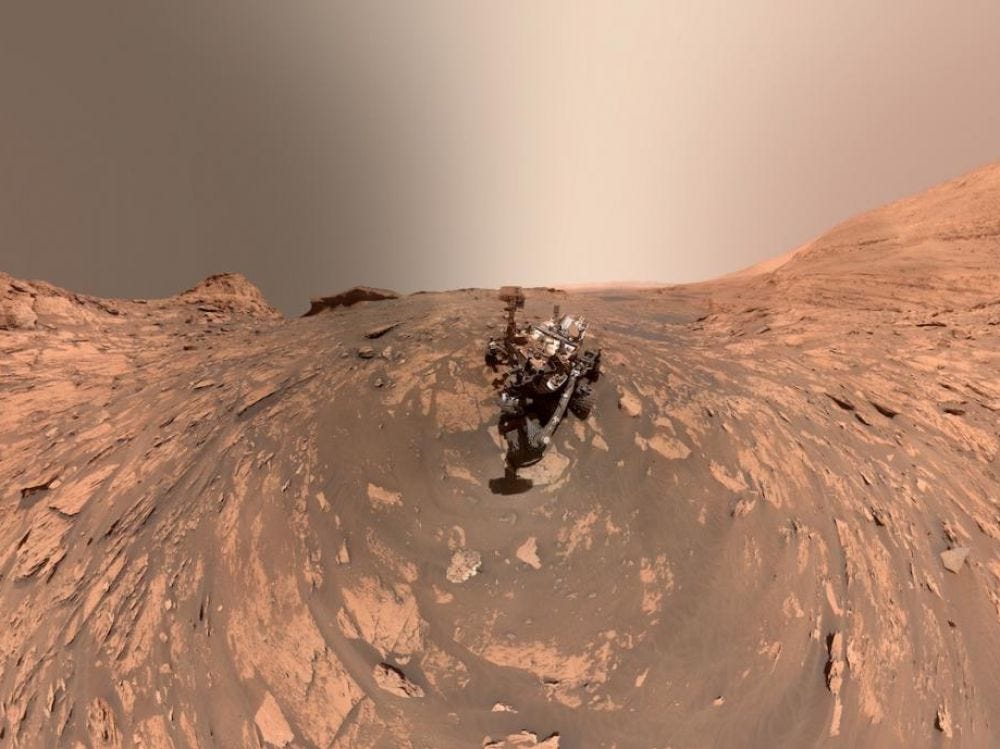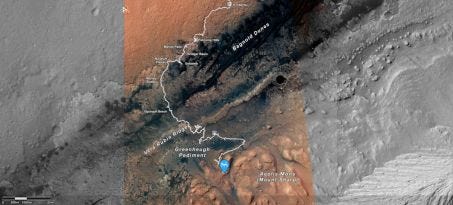The Nasa rover Curiosity continues to explore the Red Planet after ten years of good and loyal service. We owe it fantastic images of Mars, and a completely renewed vision of this planet.
On August 6, 2012, the Nasa rover Curiosity landed on the planet Mars inside the Gale crater. Its exploration mission was planned to last one Martian year, or 687 Earth days. Ten years and a little more than 28 kilometers later, the spacecraft is still operational, although showing some signs of wear. Nevertheless, it continues to analyze its environment and to deliver images and data to Earth... A look back at its main discoveries.
The quest for water on Mars
Very soon after landing, Curiosity obtained evidence that water had flowed on the Red Planet. It photographed small, smooth, rounded pebbles that once rolled along a riverbed. Then it was the turn of rock formations in a region called "Garden City" containing veins about 6 centimeters high and 4 wide, surrounding brown-ochre plates, to bring a new proof. According to Nasa, this is indeed a relief that can only be formed by the action of liquid water. In 2015, a long-awaited news reached us: not only was there liquid water on Mars but it is still present! It is found as seasonal outcrops that moisten the sand on the surface. Unfortunately, since then, the fever has subsided, as the formation of these outcrops can be explained by other phenomena not involving liquid water...
A planet favorable to life
Curiosity discovered various elements such as sulfur, nitrogen, oxygen, phosphorus and carbon. All key ingredients necessary for life. Further investigation revealed thiophenes, methylthiophenes, methanethiol and dimethylsulfide. Their presence proves that when the Red Planet presented a completely different face with liquid water on its surface and even a vast ocean, there were also organic molecules. Clearly, the two elements essential to life were present at the same time on our neighbor, now a desert. Is this enough to affirm that life was indeed present on Mars? No, said NASA at the time. And the debate is far from over.
( Curiosity's journey from its arrival in Gale Crater. Credit: Nasa/JPL-Caltech/MSSS. )
Keep reading with a 7-day free trial
Subscribe to NEWSLETTER " the Astro Journal " to keep reading this post and get 7 days of free access to the full post archives.





